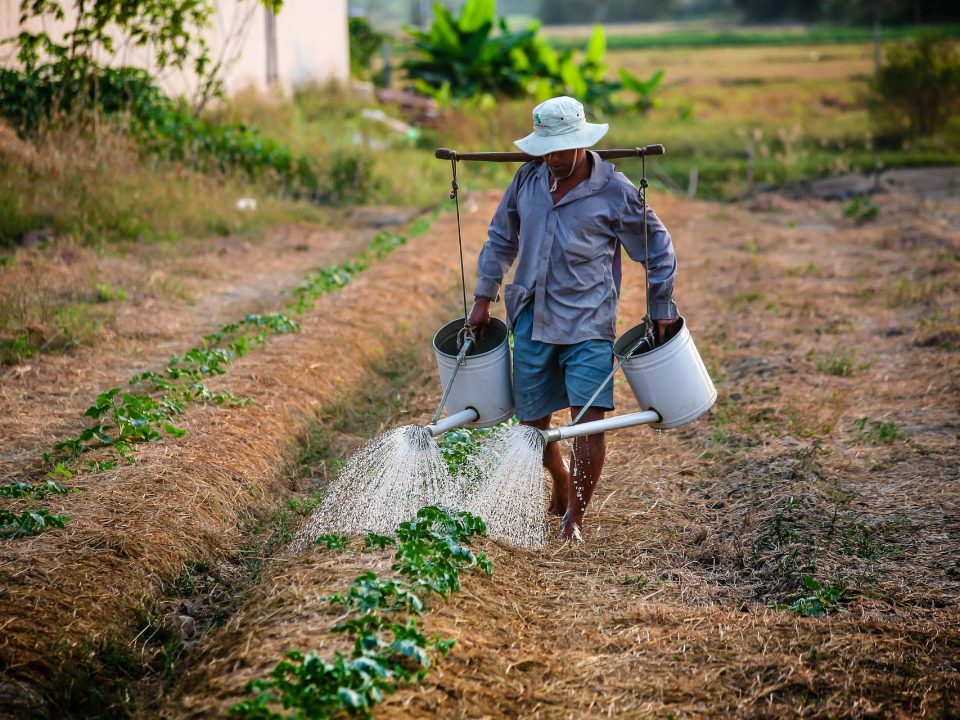Growing roses

prune trees
July 18, 2019
Fertilizer
August 2, 2019That’s how you will become an expert in Growing roses
Written by Ronen Kozushner, Natural Green Seeds.
Already in the kindergarten we get to know the roses and no wonder, it is one of the most common plants in both public and private gardening. Flowering roses in a wide variety of colors, a selection of scents from lightening and intoxicating and abundant flowering. The roses combine well with the style of Mediterranean landscaping. Their use ranges from covering vegetation to color beds like free shrubs, stylized plants and climbers. Landscape architects, gardeners and amateurs plant them in gardens and expect good results. This article will help you succeed in growing roses if you have purchased them from the unqualified potted or rootless.
Selection of root-roasted rose seedlings
In choosing root-roasted rose seedlings, note that the roots will be healthy and branched, that the trunk will be free from injuries and sun plagues and be straight. Very long or broken roots should be pruned before planting.
Roots are reaching the nurseries for the winter. They come from “naked” Kurds that can be found in nurseries in sawdust boxes or covered with soil. These must be planted immediately,
Location
Roses need direct sunlight at least 6 hours a day. A rose that does not receive enough light will look poor, and will not blossom. It should be watered at least once every 2-3 days, saturation! It is better to watered in the early morning, so as not to create moisture in the plant area.
planting
The pit must be prepared in advance. The diameter of the hole must be larger than the root diameter when it is sliced. Depth of the pit – depending on the length of the trunk. It is important that after covering the root, the soil will not reach the swelling of the assembly. Another possibility is to dig a less wide hole, stack a mound of earth in the center, and lay the sapling so that the roots are arranged around the mound. So they do not get in trouble and there’s enough space for everyone.
The mounting apple should be 2 – 5 cm above the ground.
During planting, the pit must be dredged to create optimal air-to-air ratio. To avoid direct contact of the root with the garbage, it is possible to mix the soil with compost, in a relationship of 1/3 compost: 2/3 soil.
Cover and irrigate the saturation – it is important that the soil sit firmly on the root and that there are no air pockets left. Roses that are sold in December in writers and nurseries are roses that sit in a bag with a picture of the flower, usually a white bag. – So if I hit the type of bag then download in a bag not found in the ground. The roots are found in special sawdust that is intended to maintain minimal moisture in the roots. If the roots dry completely, then the rose will die.
Fertilizer and manure
In the said winter with potting put in a well manure with the help of compost in relation to 1/3 compost 2/3 soil and mix well to a uniform mixture.
In the summer, from May to the end of June, it can be fertilized 20 to 20 times in 3 weeks. If you see that the soil does not absorb water properly (standing water after irrigation), you can add a handful of compost and the soil to the desired result.
Watering
We will separate the bag from rootless roses, roses planted from the ground and roses planted in planting containers. But in all cases we recommend to irrigate the drip except for the time of planting itself given and even desirable to use the tube.
Rootless roses are sensitive to dehydration in the root area and therefore immediately with the planting should be watered to saturation and maintain daily watering for at least ten days to two to three weeks. About 5-7 liters each day, depending on the type of soil. Then, when you see the development of the plant, you can consider irrigation spacing but maintain a weekly amount of at least 30 liters a week. Do not rely on that winter and rainy because there are usually long interruptions between rain systems.
In this case, it is necessary to water less than ten days on a daily basis for up to two weeks, when you see the leaves leaving the water.
And new trades can be made. A weekly quantity of 40-30 liters per bucket of 7 liters and 100-70 liters per 25 liter tank, depending on the type of soil. So be sure to follow the development of the plant.
Roses planted in containers are planted in a relatively light bed. Many gardeners fail to grow roses in containers for several reasons. The first is the lack of water, light soil should be watered frequently to maintain soil moisture. A second reason is poor drainage that creates an ideal air-to-water ratio in the tank. A third reason is to choose a container that is too small for the development of a plant whose growth rate is rapid and will require a larger substrate in a larger pot. The last reason is saline soil because of excess fertilizer, usually from the fertilizer pump. Plants in containers should be removed from the tank once every two years, rinse slightly the root mass and replace the soil. If we return to the irrigation, make sure that the irrigation is frequent (even daily in the summer) and the soil is also damp in the depth of the pot. The test will be done manually.
Pruning roses are present
No uniform pruning formula has yet been found. There are different opinions about what is the best pruning.
Pruning time The end of winter / early spring when the eyes begin to swell but still have no leaves.
Usually the deadline is the end of February, particularly cold places and the end of March. In warm areas can be pruned in late December early January.
Pruning stimulates the rose to develop new growth. Pruning prematurely can cause problems: the new growth is sensitive to cold and wind and may dry out, and most of the energy will be wasted. Secondary growth will start in lower places (dry eye will not recover) in addition to pruning wounds can freeze in the cold. If the cut was trimmed too early and the cold made names it must be pruned again as if it had not been trimmed at all. Do not leave damaged branches or burned eyes from the wind. Hord is not dead due to early pruning but loses his power and of course the abundance of flowering. You should also know that you do not trim where the thorns are already gray or brown if you want the chopped branch to come out of foliage and new blossom. Pruning will only be done in places where thorns are still young.
There is a certain difference in pruning the different varieties:
ROSA TEA HYBRID SPP.:
Remove dead and thin branches to the point where they leave the arm and leave no strands
Sick arms (usually darker ones with darker surfaces) should be trimmed to a healthy part, and a healthy part is evident by its bright green growth
“Open” the center of the download by cutting all the branches that cross it. Do not leave the buckles. The assembly apple should be left open and ventilated.
In the first year, deep pruning should be performed, ie, remove 2/3 of the length of the branch, leaving only the lower third (3 lower eyes of the branch). From the second year on, the pruning is less deep, and only the top third of each branch (about 3 upper eyes) should be removed.
Leave 4 or 5 strong arms outwards, and prune over eyes that also face outward.
The pruning will be done by sharp shears, above the eye that turns outward (about 5-7 mm above the eye) in order to cause the Lord to continue the growth of the branches outward. Aim for a cup-shaped dialogue.
ROSA FLORIBUNDA .do not have to be so careful about pruning. Remove diseased and degenerated branches, and cut uniformly to the desired height. The growth in floribondas is strong enough to overcome even a much less meticulous pruning.
Roses are climbing
Not to cut new growth last year that is thicker than a pencil. It is important to know that climbing roses are not desirable to prune until their third year, in order to give them the possibility to establish themselves and accept their characteristic shape.
During this period it is worth cutting only withered flowers and new branches that interfere with the desired shape. Over time, the climber lowered the index of long branches from which side branches bearing flowers emerged. Some climbing roses take out new branches from the root and part from above.
The goal of pruning the climber is to grow new branches that will gradually replace the old ones. At the end of the flowering prune the branches that bloomed but leave up to 2-3 eyes from the beginning of the branch (be careful not to prune the branch bearing the branches that bloomed).
Debel De Lite
Most of the flowering in the climbers is formed on branches of 2 to 3 years old and on branches that grow parallel to the soil rather than upwards. This must be taken into account when connecting the branches of the discourse. Correct binding is very important. The branches are supposed to be tied horizontally on both sides of the heart. Branches tied horizontally will produce almost every flower, as opposed to tying up. Flowers can also be cut in the early years of the bush, but be careful not to remove too much of the branch, that is, to cut it with a stalk of 2-3 eyes at most.
Damaged, broken, or non-flowery arms are important to prune to the assembly point. In general, it is not advisable to touch the long arms but to direct them while tying.
Picking roses
For tea gillers, make sure to pick the right ones: pick only a leaf of 5 fingers. Such a leaf came out a new flower within 4-5 weeks.
The branches of the “pig” bar cut as close as possible close to where they left.
Cut flowers
It is best to cut off the flowers after the nibble in order to prevent the creation of seeds unless we decide to pick them up before to enjoy the house. 2 – 3 eyes are taken from the flower, preferably above a leaf with 5 leaves (not 3), and not at the point where a branch or other stem splits. It is also worthwhile to use the kit to contribute to the shaping of the entire discourse and, of course, to shut off eyes that look outward. Trimming or picking the flower with a long stalk will cause the next flower to appear longer, but with a longer stalk. If we do not stop the wilted flowers, we will get less flowering on the bush.
Recommended strains from experience:
ROSA TEA HYBRID SPP.
Queen Elizabeth QUEEN ELIZABETH – pink color, large bud, delicate flower but the most powerful strain, easy smell.
CHRYSLER Imperial CHRYSLER IMPERUAL – Red Bordeaux color, huge buds, gorgeous scent, suitable for picking and making jams. Named after the classic Chrysler.
Oklahoma OKLAHOMA – a velvety burgundy color, a large flower with the scent of a time. A very sturdy plant suitable for picking and making jams.
DOUBLE DELIGHT – Combined color white with red, especially strong smell.
Harmonic HARMONIE-colored orange salmon, sturdy and fragrant.
MAXIM MAXIM – Pink and white, sturdy and abundant rash, light smell.
LAS VEGAS LAS VEGAS-Color Orange orange blossom, robust and fragrant, abundant flowering.
Spend MABELLA-color yellow rash, strong smell, suitable for picking.
GOLDEN FANTASY GOLDEN FANTASIE – Yellow flower color, large flower, strong smell, suitable for picking.
Climbing
Don Juan-with large flowers, dark burgundy,
Iceberg ICEBERG CLIMBING – the best known climber, starring in many films when shooting beautiful houses with climbing, white color, blooming profusely. Rapid growth, a sturdy plant, belongs to the Florivandas. Highly recommended! It can also be obtained as a stem designer.
In BANKSIAE-BANKSIA there is a white color (Alba, pictured above) and there is orange (Lutea). Frequent vegetable, vigorous growth and abundant bloom.
Cocktail Cocktail – Blooms profusely in red with a yellow eye, especially sturdy.
On stem – the assembly of a rose on a barrel of varying length from 40 cm to 60 cm and up to three feet, which creates the appearance of a flowering pompon.
Just Joey – From the tea lockers, fire-orange colors, very prominent, large and fragrant.
Judy Garland Judy Garland – Judy also excels in a fire blossom as the color of the famous actress. Fragrant with an apple smell.
Iceberg ICEBERG CLIMBING- As already mentioned blooms profusely in white as well as designed on a stem (pictured above). Highly recommended!
Zipper Chipper – plenty of pink blossoms with small flowers, blooming most of the year, dwarf, heat resistant.
Garden Director Pink Gartendirektor Otto Linne clusters of small pink flowers. There is also a discourse.
Ch-2 Ch-2-fire-red blossoms, wonderful floribunda on stem. Especially sturdy.
Stretching
Fire River Mainaufeuer – plant covered area, height 0.8 m, blooms red in abundance in the spring, summer and a little fall, easy to grow.
Seno Craft Snow Carpet – plant covering low 0.3 m, blooming in white in the spring, fast, a pair of coveted along with the river of fire.
English roses
Golden Celebration – A yellow lemon blossom climber, blooming in waves throughout the year, a full and large flower.
William Morris William Morris – A strong smell, blooming pink and pink, blooms in waves throughout the year.
Roses in winter:
The roses are deciduous. Will return to bloom in the spring. If you are in cold areas in the winter it is recommended to sprinkle a little straw around the trunk (on the roots below the soil) and spring to the graph. This is to prevent cold damage to the root.
Diseases and pests
The roses are deciduous and during the winter the leaves fall off. This is not a disease and harmless, a completely natural process. Note: Roses in a private garden can thrive even when there are certain pest infestations, such as mildew, thrips or aphids. If the contamination is not at the level that threatens the plant life, it is also possible not to treat at all, thereby reducing the environmental impact and work with toxic substances. You can simply remove the infected leaf, in winter most of the pests disappear. Proper fertilization and adequate irrigation will help the plant survive, and sometimes even prevent infection






